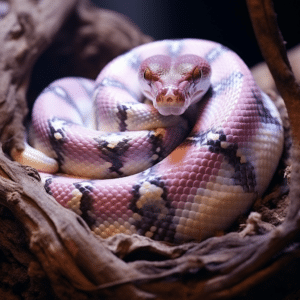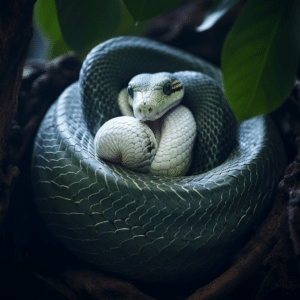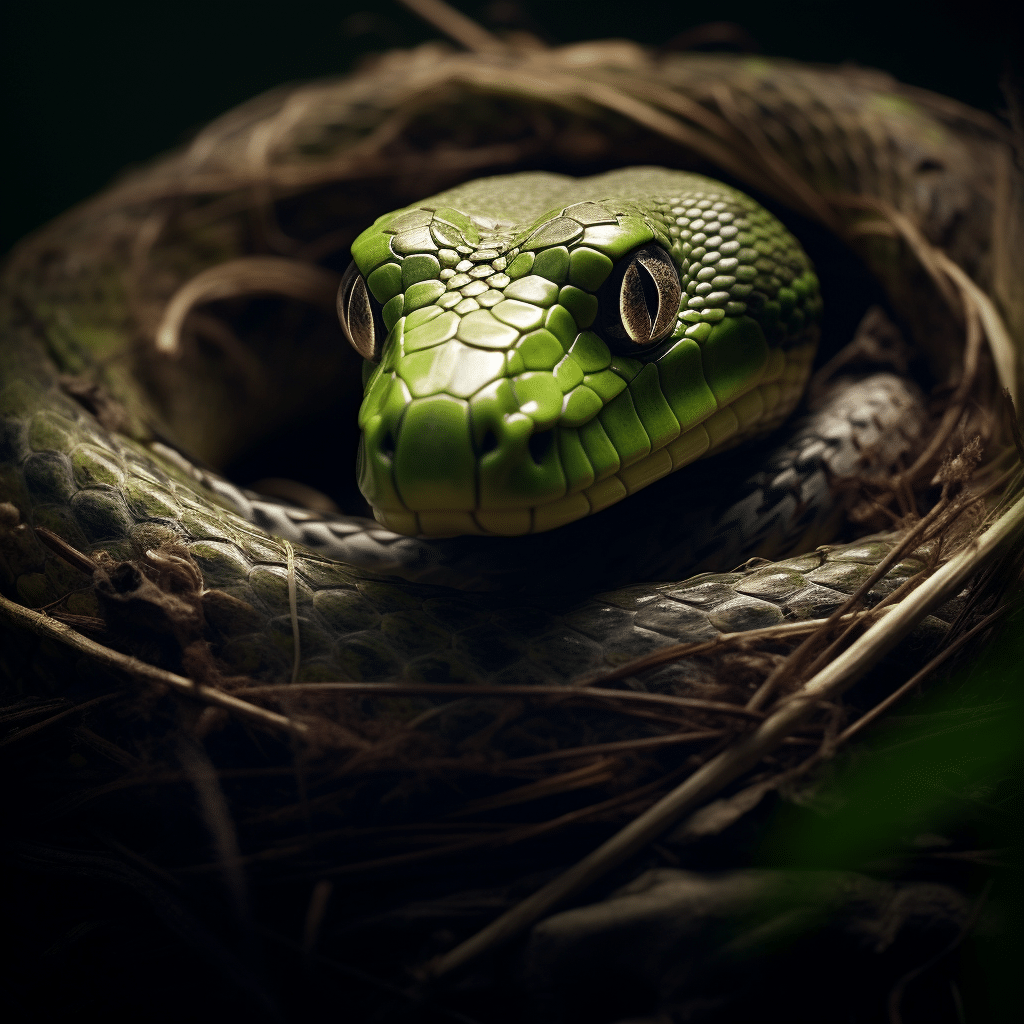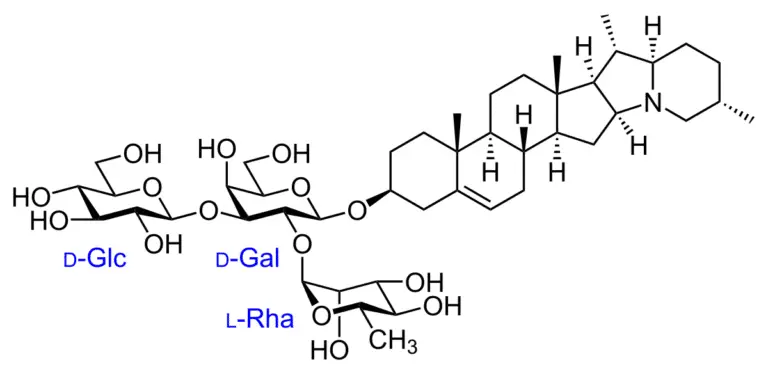Debunking Snake Myths: Are Snakes Attracted to Breast Milk?
An old myth is told of how certain snakes stole milk from cows. These milk “stealing “ snakes were often seen around barns and sheds where milk cows were kept, and people believed that the snakes would latch on the udder and suckle the milk.
This myth forms the basis on which some people believe snakes are attracted to breast milk. Some mothers swear to have seen snakes while breastfeeding, which can be true but may not have been necessarily attracted to breast milk. This and other myths about snakes have no evidence hence invalidating them.

Are snakes attracted to breast milk?
Lampropeltis Triangulum, commonly known as milk snakes, is commonly found in barns and other farm buildings, pastures, meadows, and backyards. However, they are there for their prey – mice, small snakes, lizards, frogs, and insects. Snakes, like any other reptile, cannot digest milk and other dairy milk products. Milk is only meant for mammals, which are warm-blooded. However, like all living things, snakes need water to survive. If they don’t have enough, they’ll be dehydrated and eventually die. A snake may drink milk if they are very thirsty, but it could die from the stress on the digestive tract.
Myths about snakes are backed up by several religious and cultural beliefs;
Religious beliefs
Hindus are known to worship snakes in temples as well as in their natural habitats, offering them milk, incense, and prayers. Several myths, beliefs, legends, and scriptures in Hinduism are associated with snakes, and their venom was often used in palace intrigues. In a festival known as Nag Panchami, it is said snake charmers starve them for days, and on the day of the festival, they are let loose and given milk.
So, these snakes drink the milk as a matter of life and death as they try to quench their thirst and satisfy their hunger, not because they love milk. With such a background, when a Hindu woman sees a snake while nursing, she is more likely to believe that snakes are attracted to breast milk as a symbol of blessing to the mother and child.
Christians view a snake as an evil, demonic, deceitful animal that represents temptation as seen in the story of Adam and Eve in the Bible. The snake deceived Eve, and it caused the downfall of human beings from a place of favor with God to face death and difficulties in life.
In Islam, snakes are seen potentially as a jinni, an invisible demonic creature that should not be killed. However, if a snake is spotted within the home, it should not be killed until it has been warned three times, whether they understand or not is the big deal here. Therefore, the Christian and Islamic beliefs don’t support the myth of a snake being attracted to breast milk, for it would be a sign of a curse, bad omen, or jinx.
Cultural beliefs
Among the Hopi people of North America, an annual snake dance was performed to celebrate the union of Snake Youth (a Sky spirit) and Snake Girl (an Underworld spirit) and to renew the fertility of nature. In other cultures, snakes symbolized the umbilical cord, joining all humans to Mother Earth, and they were worshiped as guardians of her mysteries of birth and regeneration. In Chinese mythology, a woman-headed snake,Nüwa, made the first humans.
She made humans one at a time with clay. This depicts a snake as the giver of life thus its presence during nursing is seen as a blessing. Greek cosmological myths tell of how Ophion, the snake, incubated the primordial egg from which all created things were born.
Other common snake myths
- Snakes are deaf. Snakes lack eardrums but possess inner ears which can pick up ground-borne vibrations and low-frequency airborne sounds. However, they do have difficulty with sounds at a higher pitch.
- A mother snake will swallow her young when threatened. Any snake that is ingested by another one dies due to digestive juices.
- If a snake’s head is cut off it will stay alive until sundown. That is not true; they just writhe as they die.
- Snakes are aggressive. Snakes do not go looking for people to bite. Snakes are more afraid of you than you are of them.
- If you kill a snake, its partner will come after you. These creatures don’t have superpowers.
- Hoop Snake bites onto its tail, forms a circle, and rolls downhill.
- All snakes are venomous. Contrary to this popular belief, only 10% of snake species in the world are venomous.
What then attracts snakes to your home?
- Tall, unkempt grass and plants.
- Presence of rodents and birds.
- Cool and damp areas in the compound.
- Trash and leaf heaps in the yard.
- Leaving pet food in the open.
- When there is a source of water in the yard such as a dam or well.
- Unlimited access to the yard.
To prevent snakes from invading your yard, firstly keep the grass short and tend to plants properly. Secondly, dispose of leaves and trash appropriately. Thirdly, do not leave pet food outside, and finally, fence your compound. You can use snake repellants too.

Natural repellants include: garlic and onion spray, lemongrass, and guinea fowl guinea fowls. It is believed snakes can’t enter a yard that has these fowls. One can also purchase commercial repellants in stores near you or online.
In conclusion, there are more myths about snakes than there are known facts. One needs to research and read more about snakes to avoid misleading myths and beliefs. Consumption of milk and lactating are mammalian characteristics.
Therefore, snakes that are reptiles, do not require milk nor are they attracted to breast milk as some myths would make people believe. A snake can only drink milk when so thirsty which might, unfortunately, lead to its death. So, as people pray to the snakes and offer them milk during their festivals, they might be basically causing their death through ignorance and observance of practices that have no scientific support.






